Cap nach Pork in Ha Giang: A Culinary Tradition to Savor
In northern Vietnam’s hilly Ha Giang, a well-known speciality is cap nach pork. Originating in the traditional customs of the local ethnic minorities, this special pork meal has evolved into a representation of local gastronomic creativity and legacy. Let MOTOGO Tours investigate the distinctive flavour of it.
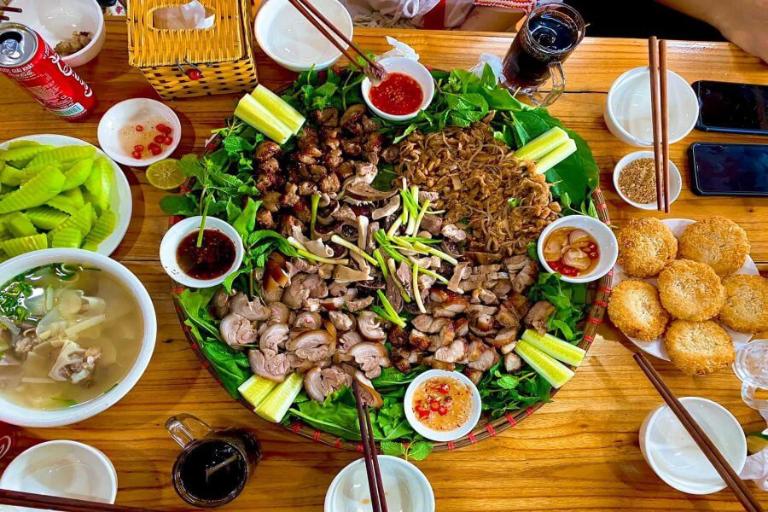
An Overview of Cap Nach Pig in Ha Giang
Combining the wild boar native to Ha Giang with the Muong pig—also known as Sapa pig—Cap Nach pork in Ha Giang is a hybrid breed. Because of this crossbreeding, the pigs resemble wild boars in many respects including appearance and behaviour. Often bought as a distinctive gift, this kind of pork has become a sought-after speciality among Ha Giang visitors, known for its soft and delicious meat.
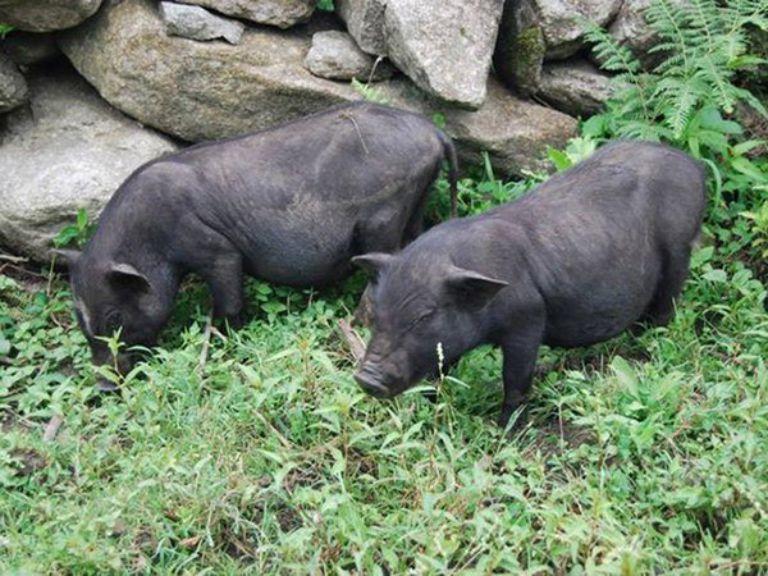
Usually, these pigs are grown in a natural surroundings. Cap illary pigs are renowned for their tendency to root in the ground and eat insects, grasses, plant roots. Therefore, many residents choose hillside locations for raising them. Every now and then they add veggies like water spinach and other greens to the pigs’ diet.
This breed’s characteristic lifestyle of digging and foraging results in a distinctive appearance; the pigs have long snouts that protrude forward. Additionally, they are recognized by their black, coarse hair that covers their entire body. The coarser the hair, the healthier the pig is considered to be.

When Cap Nach pigs reach about one year old, they are either sold or butchered. This age is believed to be when the meat is at its prime quality. At this stage, each pig weighs only about 5 to 10 kilograms. Because of their small size, locals often carry them under their arms or at their sides on the way to the market. This practice is how the breed earned the name “Cap Nach” pork, which translates to “under-the-arm” pork. The market takes place every Sunday in the center of Tam Son town.
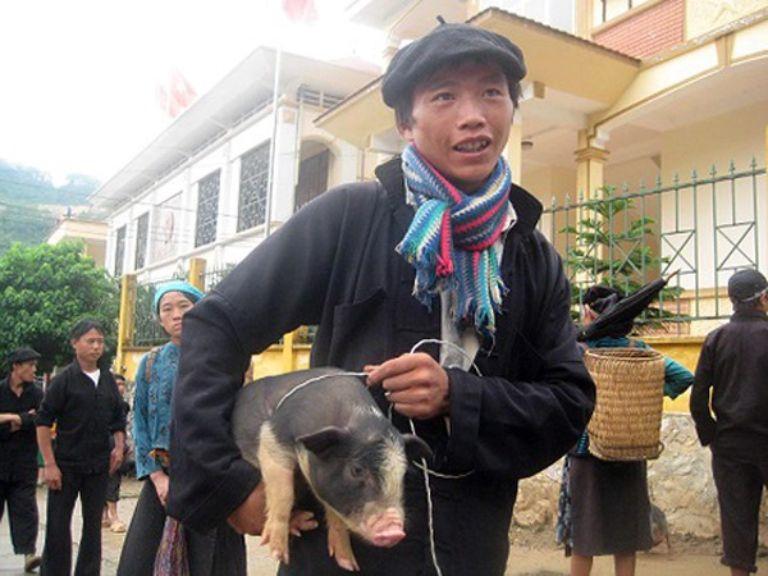
>>> Let’s see more: Ha Giang’s Culinary Specialties – Top 17 Famous Dishes From This Renowned Northern Land
Criteria for Selecting Delicious Cap Nach Pork from Ha Giang
Because of its lean, solid, low-fat meat—which is excellent—cap nach pork has grown to be a Ha Giang speciality. Raised organically, these pigs eat what they discover in their surroundings, so Ha Giang’s Cap Nach pork is especially appreciated for its safety and cleanliness for consumers.

Buying a whole pig would help you to get the best Cap Nach pork. It is simpler to tell the difference between pigs kept in natural surroundings and those fed commercial feed when the pig is alive. In addition, male Cap Nach pigs have superior meat than female ones. Male flesh typically has a harder texture and often smells nothing at all. Male pigs also commonly have less body fat since they are more active and frequent diggers of dirt.
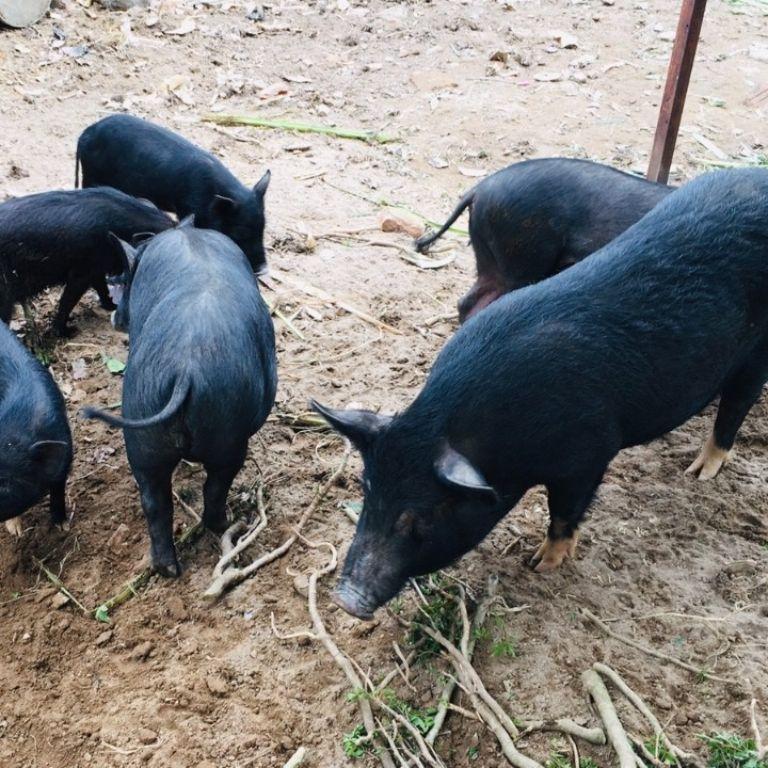
True Ha Giang Cap Nach pigs have black, coarse fur, sharp snouts, rounded rumps, and thin bellies. Should the belly seem big, the pig either gave birth before or grown on a rice or maize bran diet. Other unique characteristics include a small size, lean physique, and miniature tail and ears.
Where to Buy Cap Nach Pork in Ha Giang
Buying from Local Households
If you want certain quality, think about purchasing Cap Nach pork straight from nearby homes. Since it cuts middlemen, buying from homes is also more reasonably priced. A whole Cap Nach pig from a home will cost between 1,000,000 VND and 1,200,000 VND depending on its weight—about 10 kilogrammes. Should you bargain with the seller, you might even land a better offer.
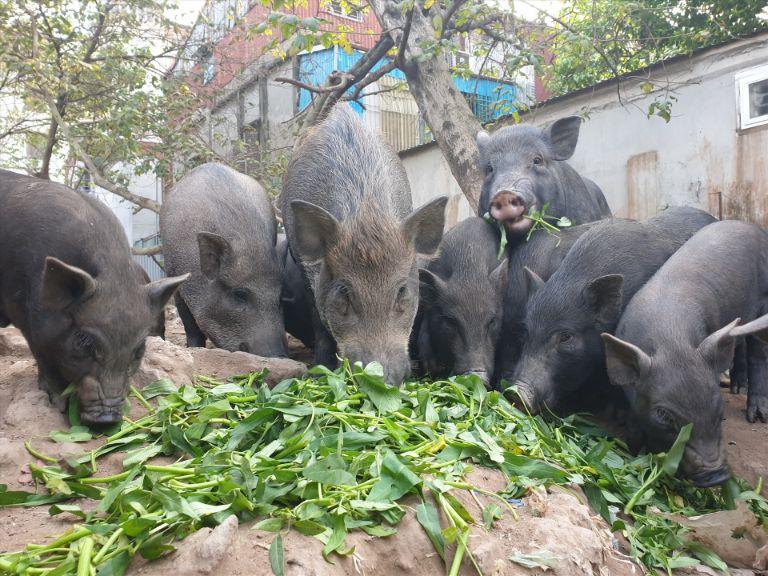
Buying at Local Markets
Cap Nach pigs can be purchased in most Ha Giang local markets, which feature sections devoted to selling animals. Ethnic minority guys selling pigs under their arms are common sight at these markets. Usually selecting the greatest pigs for sale, they guarantee quality.
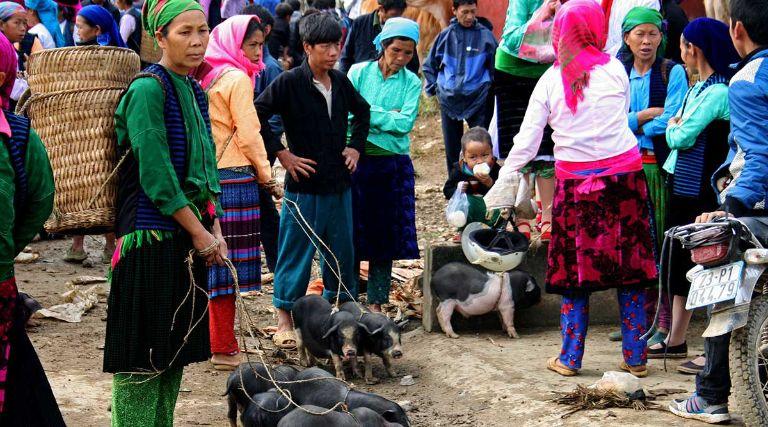
Local market prices usually run between 1,200,000 VND and 1,400,000 VND per pig. These markets also carry freshly made butchered or pre-prepared Cap Nach pork. You can savour various regional delicacies including buckwheat cakes, au tau porridge, and Thang Co (horse meat stew) while there.
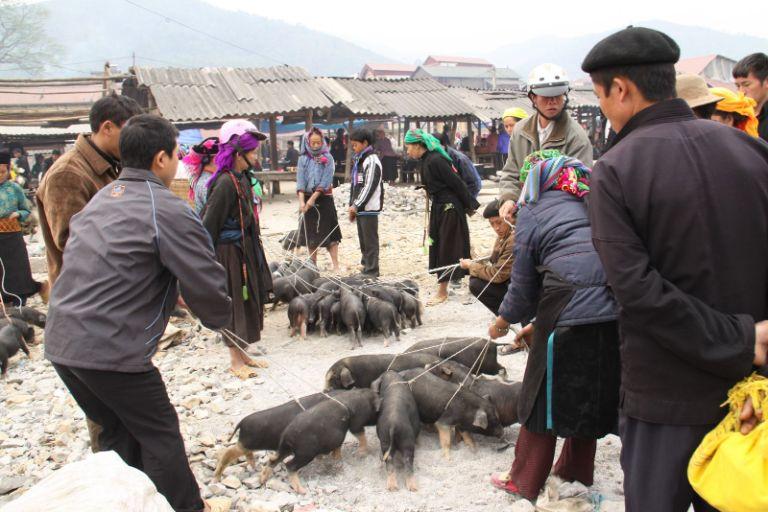
Among the several marketplaces in Ha Giang, Dong Van, Yen Minh, and Xin Man markets are the most Cap Nach pork ones. Whereas Xin Man market is hosted on Saturday mornings in Coc Pai, Dong Van and Yen Minh marketplaces take place on Sunday mornings in the town centres.
Preparing Ha Giang Cap Nach Pork
Preparation Cap Nach pork requires more time and care compared to regular breeds.The first step is to drain the blood using a hook and then shave off the coarse fur, which requires a sharp knife. To make the process easier, hot water is poured over the pig before shaving against the direction of hair growth.
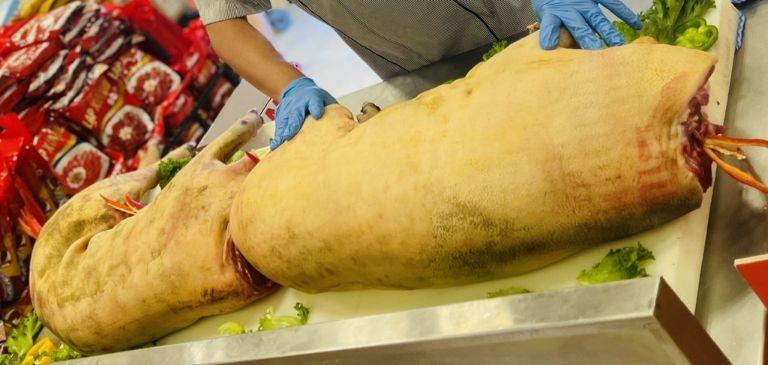
Next comes butchering. Given their small size, Cap Nach pigs can be butchered using two methods: gutting or splitting. Gutting is used for whole roasted pigs, while splitting is for other dishes. After butchering, fresh lime is rubbed over the skin several times to remove any remaining impurities before rinsing with water. Since the hair is thick, an additional step of singeing the skin is necessary.
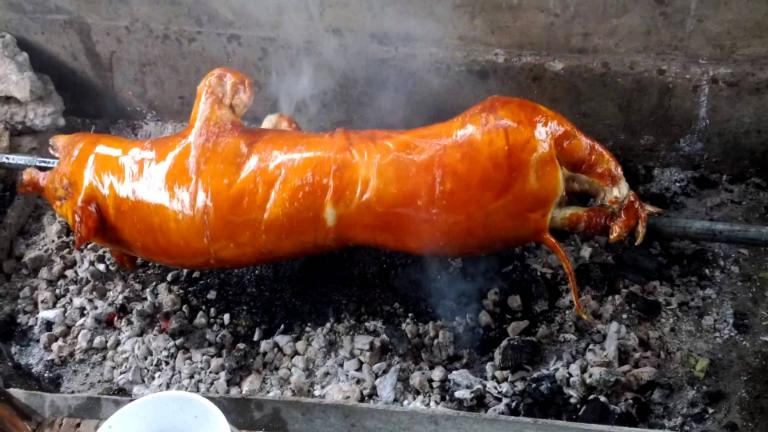
The skin is covered with caramelised sugar once the pig is dry, then singeing it over dried sugarcane husks or straw. For a consistent golden-brown skin, the fire has to be even. Once more rubbing lime on the skin, scraping off the soot, and properly rinsing the pig will help to complete the process.
>>> Explore Meo Vac Mint Honey in Ha Giang: A Unique Vietnamese Specialty
Cooking Delicious Dishes from Ha Giang Cap Nach Pork
One may make great meals from Cap Nach pork in several ways. Grilling calls for the shoulder and thigh slices; a faux dog meat stew would best use the head. Ha Giang sausages, or stuffed pork belly, are made from the intestines.
Whole Roasted Cap Nach Pork with Moc Mat Leaves
One must-try dish in the rocky highlands is whole roasted Cap Nach pork stuffed with Moc Mat leaves. The crispy skin gives way to tender meat inside, flavored with wild pepper, makhen pepper, and the unique aroma of Moc Mat leaves. It’s a treat that will captivate your taste buds from the first bite.
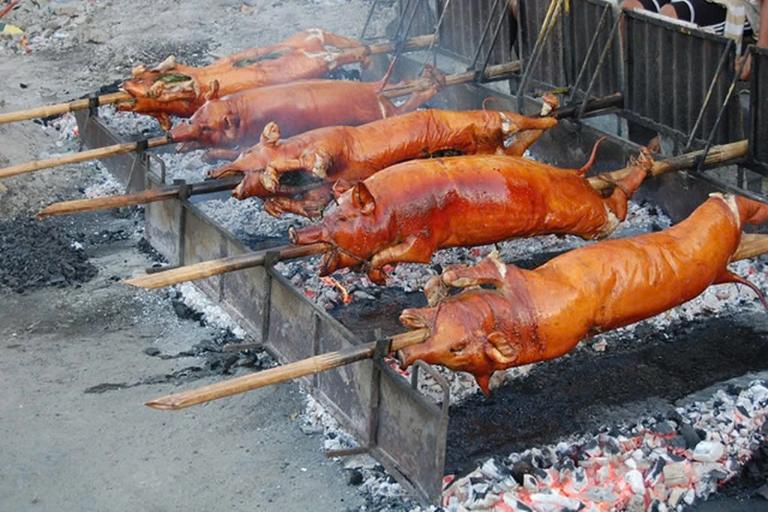
To roast a whole Cap Nach pig, sturdy bamboo sticks are used to skewer the pig from head to tail. The legs are then secured to the bamboo with wire. The pig must be firmly tied to prevent shifting during roasting. The stuffing includes Moc Mat leaves and fruits, fermented bean paste, ginger, garlic, and seasonings like fish sauce, salt, and broth powder. The ingredients are mixed together and stuffed into the pig’s belly before sewing it shut to keep the flavors sealed.

During roasting, ensure the heat is consistent and turn the pig regularly. Brush thin layers of oil on areas exposed to the fire to prevent burning. To check doneness, poke a small stick into the belly—if clear fat drips out, it’s cooked; if pink, roast it a bit longer.
Roasted Pork Belly
Considered the best cut, pork belly has thin fat alternately with lean meat layers. Though not overly greasy, it is juicy and delicious. Cut cooked pork belly into 25 to 30 cm strips first. Wash the meat and marinade it for forty to sixty minutes using makhen pepper, salt, fish sauce, cinnamon, and star anise. Tie the meat on a bamboo skewer and cook it just like the whole pig would be done. On the other hand, for convenience you might choose an air fryer, which guarantees safety while preserving a fantastic taste.
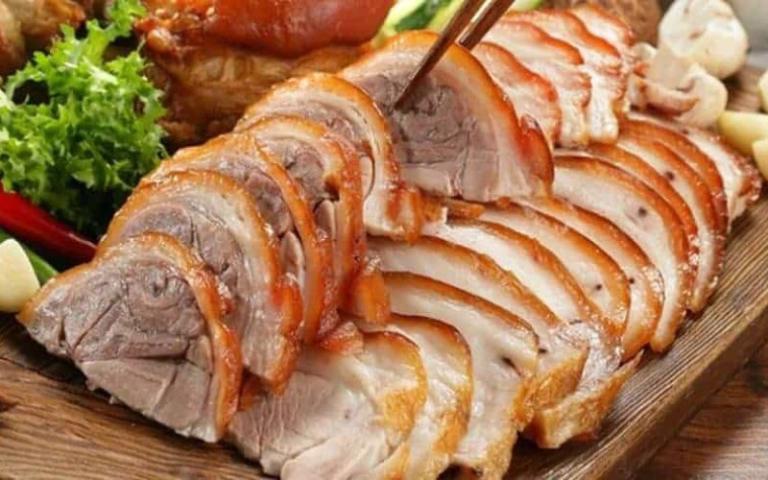
Where to Enjoy Ha Giang’s Cap Nach Pork Delicacies?
Ha Giang’s well-known Cap Nach pork specialities abound in venues worth savouring. Many restaurants and bars serving dishes created from this unusual kind of pork line the main streets in the city centre and local regions.
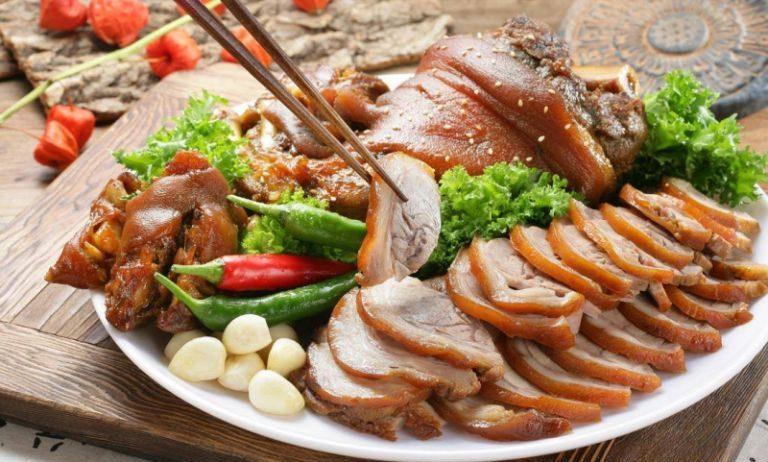
These restaurants have varied menus with roasted Cap Nach pork, stewed Cap Nach pork in “fake dog” style, steaming Cap Nach pork, and even treats like pork offal. Every meal appeals not only but also attractsively. The cooking technique and the level of the restaurant you select will affect the price of Cap Nach pig meals; still, generally the cost is moderate and reflects the quality of the dish.
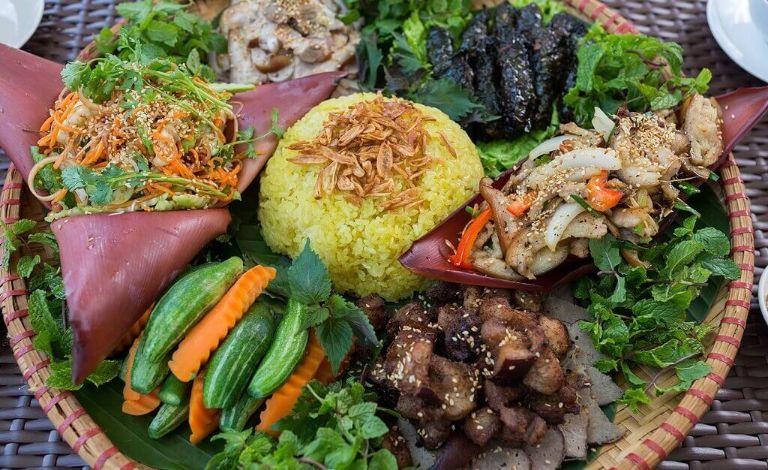
Staying at a homestay in locations such as Pa Vi village or the cultural tourism hamlet of Lung Cam will allow you to savour the delicious flavour of Cap Nach pork directly at your accommodation, therefore offering a more real experience. Most homestays in these towns let you request speciality cuisine. Just let the crew know; your dinner will be Cap Nach pork.
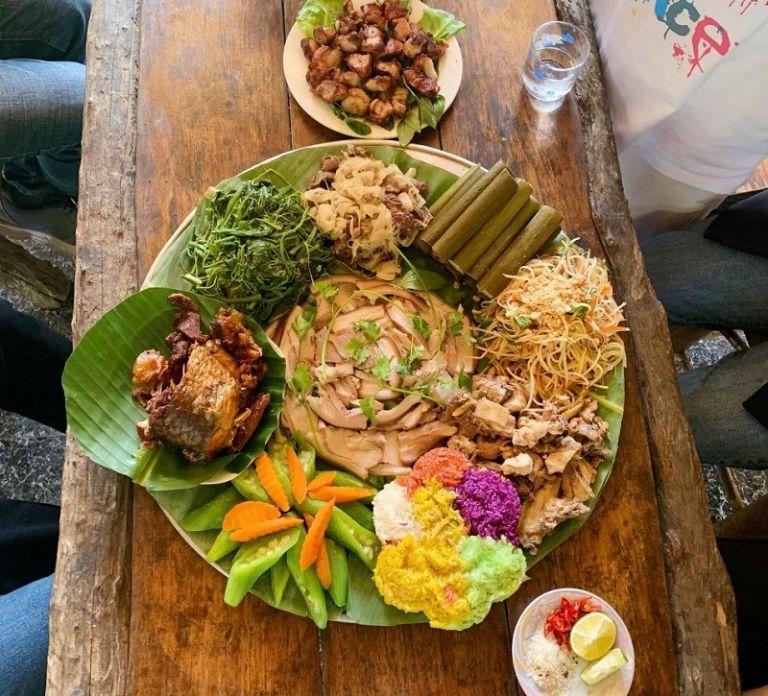
Using bamboo trays and banana leaves is one distinctive way the residents of Ha Giang present Cap Nach pork. Their arrangement of the dishes along the perimeter of the tray lined with fresh banana leaves centres dipping sauces such as “cham cheo” or another condiment. This classic approach gives the eating experience something unique.
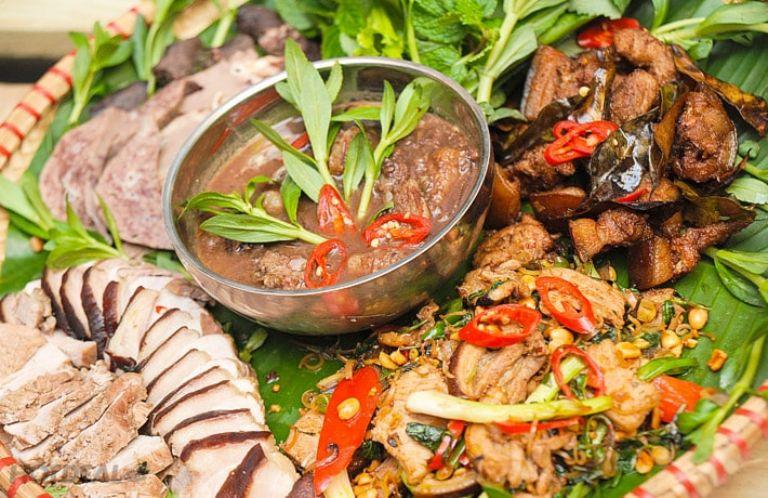
Cap nach pork is a culinary custom reflecting Ha Giang’s spirit and legacy. From its cultural value to its unusual cooking techniques, every feature of this special pig species reveals the rich history of the area. When you visit Ha Giang next time, don’t miss the opportunity to enjoy this local speciality.
Related Posts:
- Five-Color Sticky Rice of Ha Giang | A Specialty Rich in Ethnic Culture
- Smoked Buffalo Meat | Discover Ha Giang’s Unique Culinary Delicacy
- Discover Dong Van Rice Rolls | The Delights of Ha Giang Cuisine
- Experience the Essence of Shan Tuyet Tea in Ha Giang
- Ha Giang Corn Wine – A Taste of Vietnam’s Cultural Heritage







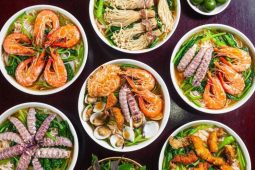

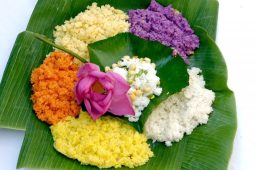
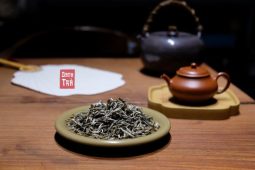

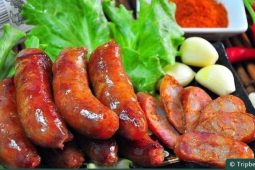
Be the first to comment!